Global Market Comments
October 9, 2020
Fiat Lux
Featured Trade:
(THE NEW AI BOOK THAT INVESTORS ARE SCRAMBLING FOR),
(GOOG), (FB), (AMZN), MSFT), (BABA), (BIDU),
(TENCENT), (TSLA), (NVDA), (AMD), (MU), (LRCX)

Global Market Comments
October 9, 2020
Fiat Lux
Featured Trade:
(THE NEW AI BOOK THAT INVESTORS ARE SCRAMBLING FOR),
(GOOG), (FB), (AMZN), MSFT), (BABA), (BIDU),
(TENCENT), (TSLA), (NVDA), (AMD), (MU), (LRCX)

Global Market Comments
September 23, 2020
Fiat Lux
Featured Trade:
(AN INSIDER’S GUIDE TO THE NEXT DECADE OF TECH INVESTMENT),
(AMZN), (AAPL), (NFLX), (AMD), (INTC), (TSLA), (GOOG), (FB)

Last weekend, I had dinner with one of the oldest and best performing technology managers in Silicon Valley. We met at a small out of the way restaurant in Oakland near Jack London Square so no one would recognize us. It was blessed with a very wide sidewalk out front and plenty of patio tables to meet current COVID-19 requirements.
The service was poor and the food indifferent as are most dining experiences these days. I ordered via a QR code menu and paid with a touchless Square swipe.
I wanted to glean from my friend the names of the best tech stocks to own for the long term right now, the kind you can pick up and forget about for a decade or more, a “lose behind the radiator” portfolio.
To get this information I had to promise the utmost confidentiality. If I mentioned his name, you would say “oh my gosh!”
Amazon (AMZN) is now his largest holding, the current leader in cloud computing. Only 5% of the world’s workload is on the cloud presently so we are still in the early innings of a hyper-growth phase there.
By the time you price in all the transportation, labor, and warehousing costs, Amazon breaks even with its online retail business at best. The mistake people make is only focusing on this lowest of margin businesses.
It’s everything else that’s so interesting. While its profitability is quite low compared to the other FANG stocks, Amazon has the best growth outlook. For a start, third party products hosted on the Amazon site, most of what Amazon sells, offer hefty 30% margins.
Amazon Web Services (AWS) has grown from a money loser to a huge earner in just four years. It’s a productivity improvement machine for the world’s cloud infrastructure where they pass all cost increases on to the customer who, once in, buys more services.
Apple (AAPL) is his second holding. The company is in transition now justifying a massive increase in earnings multiples, from 9X to 40X. It now trades at 30X. The iPhone has become an indispensable device for people around the world, and it is the services sold through the phone that are key.
The iPhone is really not a communications device but a selling device, be it for apps, storage, music, or third party services. The cream on top is that Apple is at the very beginning of an enormous replacement cycle for its installed base of over one billion phones. Moving from up-front sales to a lifetime subscription model will also give it the boost.
Half of these are more than four years old, positively geriatric in the tech world. More than half of these are outside the US. 5G will add a turbocharger.
Netflix (NFLX) is another favorite. The world is moving to “over the top” content delivery and Netflix is already spending twice as much on content as any other company in this area. This is why the company won an amazing 21 Emmys this year. This will become a much more profitable company as it grows its subscriber base and amortizes its content costs. Their cash flow is growing by leaps and bounds, which they can use to buy back stock or pay a dividend.
Generally speaking, there is no doubt that the pandemic has pulled forward some future technology demand with the stay-at-home trend. But these companies have delivered normal growth in a hard world. Tech growth will accelerate in 2021 and 2022.
5G will enable better Internet coverage for everyone and will increase the competitiveness of the telecom companies. Factory automation will be another big area for 5G, as it is reliable and secure and can be integrated with artificial intelligence.
Transportation will benefit greatly. Connected self-driving cars will be a big deal, improving safety and the quality of life.
My friend is not as worried about government threatened breakups as regulation. There will be more restraints on what these companies can do going forward. Europe, which has no big tech companies if its own, views big American tech companies simply as a source of revenues through fines. Driving companies out of business through cutthroat competition is simply not something Europeans believe in.
Google (GOOG) is probably more subject to antitrust proceedings both in Europe and the US. The founders have both retired to pursue philanthropic activities, so you no longer have the old passion (“don’t be evil”).
Both Google and Facebook (FB) control 70% of the advertising market between them, which is inherently a slow-growing market, expanding at 5% a year at best. (FB)’s growth has slowed dramatically, while it has reversed at (GOOG).
He is a big fan of (AMD), one of his biggest positions, which is undervalued relative to the other chip companies. They out-executed Intel (INTC) over the last five years and should pass it over the next five years.
He has raised value tech stocks from 15% to 30% of his portfolio. Apple used to be one of these. Semiconductor companies today also fall into this category. Samsung with 40% margins in its memory business is a good example. Selling for 10X earnings, it is ridiculously cheap. It is just a matter of time before semiconductors get rerated too.
He was an early owner of Tesla (TSLA) back in the nail-biting days when it was constantly running out of cash. Now they have the opposite problem, using their easy access to cash through new share issues as a weapon to fight off the other EV startups. Tesla is doing to Detroit what Apple did to the cell phone companies, redefining the car.
Its stock is overvalued now but will become much more profitable than people realize. They also are starting to extract services revenues from their cars, like Apple has. Tesla will grow revenues 30%-50% a year for the next two or three years. They should sell several million of the new small SUV Model Y. Most other companies bringing EVs will fall on their faces.
EVs are a big factor in climate change, even in China, the world’s biggest polluter. In Europe, they are legislating gasoline cars out of existence. If you can make money building cars in Fremont, CA, you can make a fortune building them in China.
Tech valuations are high, there is no doubt about it. But interest rates are much lower by comparison. The Fed is forcing people to buy stocks, enabling these companies to evolve even faster.
When rates rise in a year or so, tech stocks may have to come down. They have a lot more things going for them than against them. The customers keep coming back for more.
Needless to say, the above stocks should make up your shortlist for LEAPS to buy at the coming market bottom.
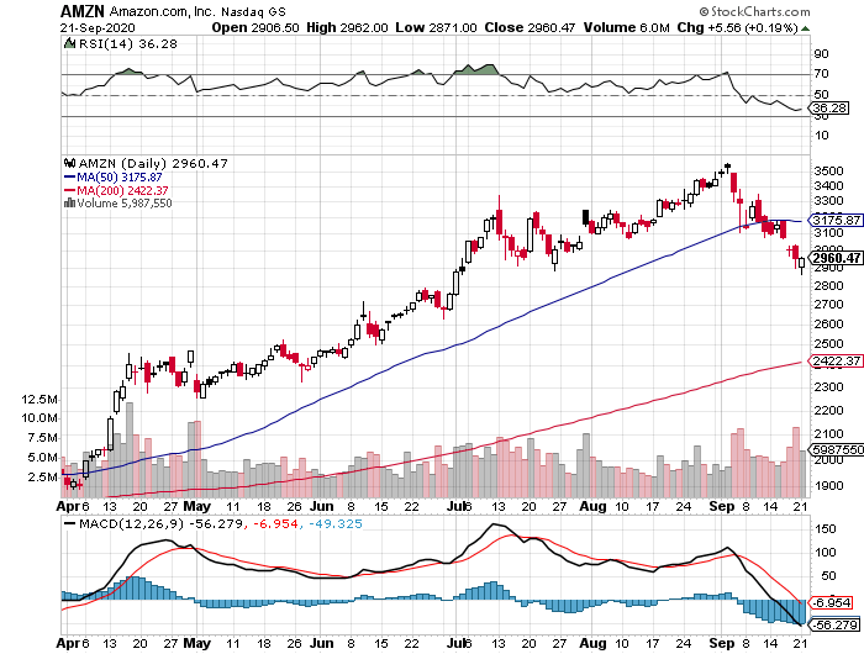
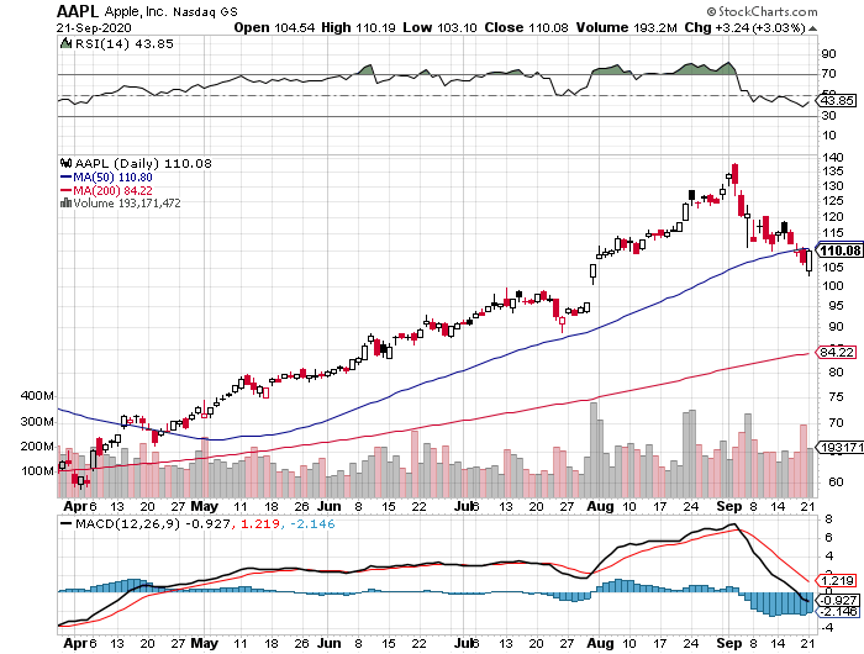
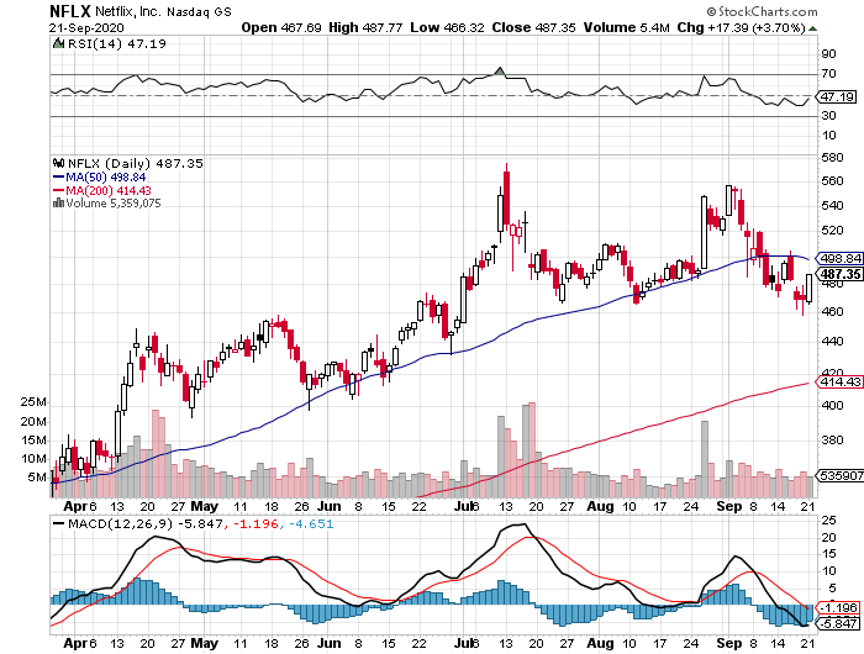
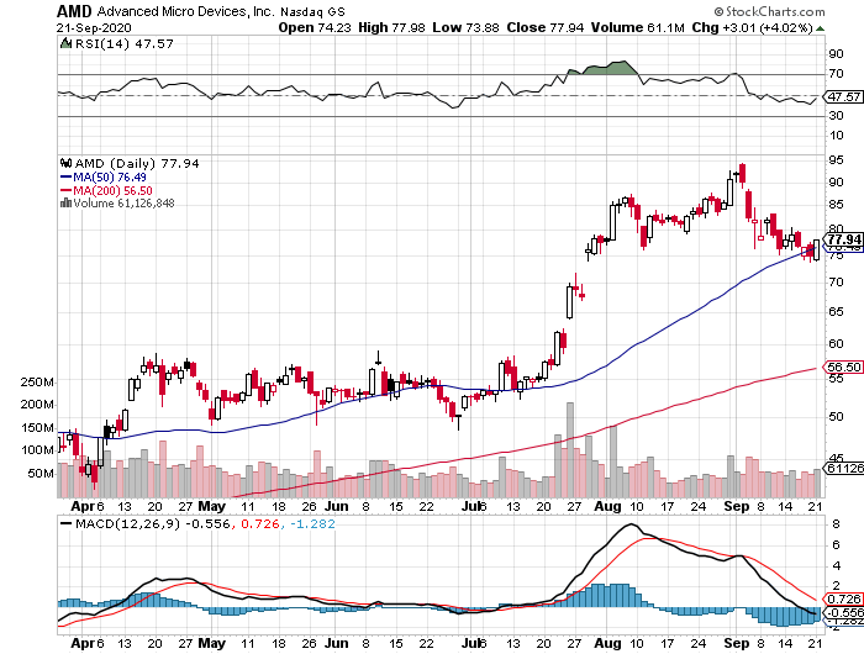
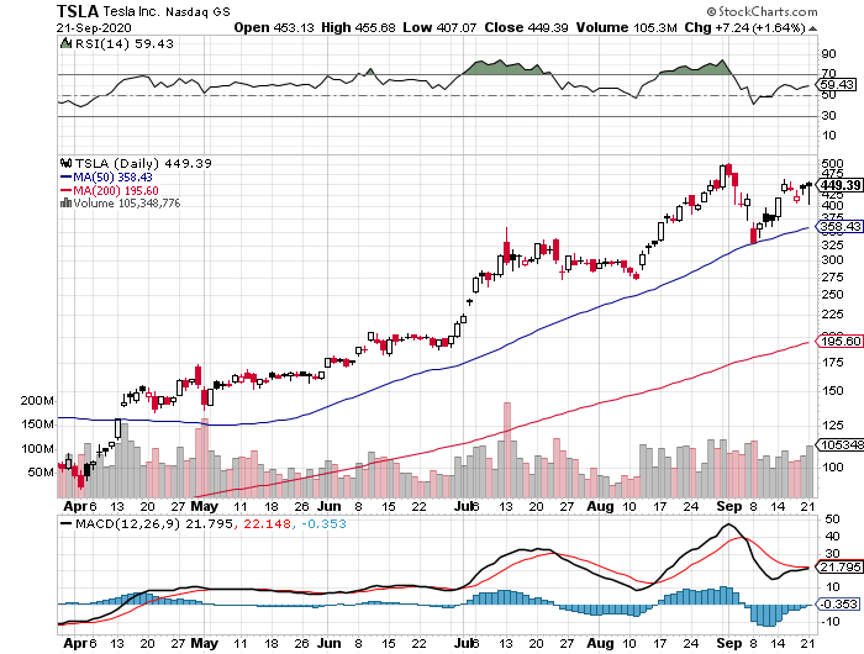

Global Market Comments
June 11, 2020
Fiat Lux
Featured Trade:
(WHY TECHNICAL ANALYSIS DOESN’T WORK)
(FB), (AAPL), (AMZN), (GOOG), (MSFT), (VIX)
(TESTIMONIAL)

Santa Claus came early this year.
We have now rocketed all the back from -37% to a feeble 0% return for the Dow Average for 2018. By comparison, the Mad Hedge Fund Trader is up a nosebleed 8.5% during the same period.
If you had taken Cunard’s round-the-world cruise four months ago, as I recommended, you would be landing in New York about now, wondering what the big deal was. Indexes are nearly unchanged since you departed, with the Dow only 5.50% short of an all-time high.
This truly has been the Teflon market. Nothing will stick to it. Not, plague, not depression, not mass bankruptcies, not the worst economic data in history.
Go figure.
It makes you want to throw your hands up in despair and your empty beer can at the TV set. All this work and I’m delivered the perfectly wrong conclusions?
Let me point out a few harsh lessons learned from this most recent meltdown and the rip-your-face-off rally that followed.
Remember all those market gurus claiming stocks would rise every day for the rest of the year? They were wrong.
This is why almost every Trade Alert I shot out for the past two months has been from the “RISK ON” side, but only after cataclysmic market selloffs.
We have just moved from a “Buy in November” to a “Sell in May” posture.
The next six months are ones of historical seasonal market weakness. For the misty origins of this trend, read “If You Sell in May, What to Do in April?” On top of that, we have the uncertainty of the presidential election to deal with.
We go into this with big tech leaders, including Facebook (FB), Apple (AAPL), Amazon (AMZN), Google (GOOG), and Microsoft (MSFT), all at or close to all-time highs.
The other lesson learned this year was the utter uselessness of technical analyses. Usually, these guys are right only 50% of the time. This year, they missed the boat entirely. After perfectly buying the last top, they begged you to dump shares at the bottom.
When the S&P 500 (SPY) was meandering in a narrow nine-point range, and the Volatility Index (VIX) hugged the $11-$15 neighborhood, they said this would continue for the rest of the year.
It didn’t.
When the market finally broke down in February, cutting through imaginary support levels like a hot knife through butter ($26,000? $25,000? $24,500?), they said the market would plunge to $24,000, and possibly as low as $22,000.
It didn’t do that either.
If you believed their hogwash, you lost your shirt. The market just kept going, and going, and going down to $18,000.
This is why technical analysis is utterly useless as an investment strategy. How many hedge funds use a pure technical strategy? Absolutely none, as it doesn’t make any money on a stand-alone basis.
At best, it is just one of 100 tools you need to trade the market effectively. The shorter the time frame, the more accurate it becomes.
On an intraday basis, technical analysis is actually quite useful. But I doubt a few of you engage in this hopeless persuasion.
This is why I advise portfolio managers and financial advisors to use technical analysis as a means of timing order executions, and nothing more.
Most professionals agree with me.
Technical analysis derives from humans’ preference for looking at pictures instead of engaging in abstract mental processes. A picture is worth 1,000 words, and probably a lot more.
This is why technical analysis appeals to so many young people entering the market for the first time. Buy a book for $5 on Amazon and you can become a Master of the Universe.
Who can resist that?
The problem is that high-frequency traders also bought that same book from Amazon a long time ago and have designed algorithms to frustrate every move of the technical analyst.
Sorry to be the buzzkill, but that is my take on technical analysis.
Hope you enjoyed your cruise.
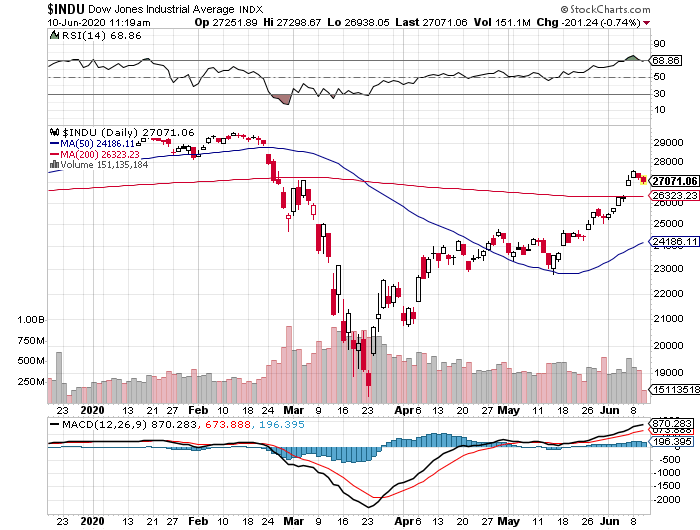

Global Market Comments
February 13, 2020
Fiat Lux
Featured Trade:
(I HAVE AN OPENING FOR THE MAD HEDGE FUND TRADER CONCIERGE SERVICE),
(MAD HEDGE FUND TRADER CELEBRATES ITS 12-YEAR ANNIVERSARY)

Global Market Comments
February 10, 2020
Fiat Lux
Featured Trade:
(LEARN MORE ABOUT ME THAN YOU PROBABLY WANT TO KNOW),
(GOOG), (AMZN), (AMGN)
(WHO SAYS THERE AREN’T ANY GOOD JOBS?),
(TESTIMONIAL)

As you may imagine, the most interesting man in the world is impossible to shop for when it comes to Christmas and birthdays.
So, it was no surprise when I opened a box and found a DNA testing kit from 23 and Me. So, I spit into a small test tube to humor the kids, mailed it off, and forgot about it.
I have long been a keeper of the Thomas family history and legends, so it would be interesting to learn which were true and which were myths.
A month later, what I discovered was amazing.
For a start, I am related to Louis the 16th, the last Bourbon king of France who was beheaded after the 1789 revolution.
I am a direct descendant from Otzi the Iceman who is 5,000 years old and was recently discovered frozen in an Alpine glacier. He currently resides in mummified form in an Italian museum.
Oh, one more. The reason I don’t have any hair on my back is that I carry 346 gene fragments that I inherited directly from a Neanderthal. Yes, I am part caveman, although past girlfriends suspected as much.
There were other conclusions.
I have a higher than average probability of getting prostate cancer, advanced macular degeneration (my mother had it), celiac disease, and melanoma.
The service also offered to introduce me to 1,107 close relatives around the world who I didn’t know, mostly in New York, California, and Florida.
The French connection I already knew about. During the 16th century, my ancestors rebelled against the French kings over the non-payment of taxes and were exiled to Louisiana. Fleeing a malaria epidemic, they moved up the Mississippi River to St. Louis and stayed there for 200 years. When gold was discovered in California in 1849, they joined a wagon train west. We have been here ever since.
I am half Italian and have birth certificates going back to 1800 to prove it. But 23 and Me says that I am only 40.7% Italian (see table below). It turns out that your genes show not only where you came from, but also who invaded your home country since the beginning of time.
In Italy’s case that would include the ancient Greeks, Vikings, Arabs, the Normans, French, Germans, and the Spanish, thus making up my other 9.3%. Your genes also reflect the slaves your ancestors owned, for obvious reasons, as well as many of the servants who may have worked for them.
It gets better.
All modern humans are decended from a single primordial “Eve” who lived in Eastern Africa 180,000 years ago. Of the thousands of homo sapiens who probably lived at that time, the genes of no other human made it into the modern age. We are all decended from a single “Adam” who lived 275,000 years ago. Obviously, the two never met, debunking some modern conventions.
Around 53,000 years ago, my intrepid ancestors cross the Red Sea to a lush jungle in the Sinai Penninsula probably pursuing abundant game. 53,000 years ago, they moved on the vast grasslands of the Cental Asian Steppes. As the last Ice Age retreated, they moved into the warmer climes of South Europe. We have been there ever since.
23 and Me was founded in 2006 by Anne Wojcicki, wife of Google founder Sergei Brin. It is owned today by her and a few other partners. Its name is based on the fact that humans' entire DNA code is found on 23 chromosomes.
23 and Me and other competitors like Ancestry.com, MyHeritage, and Living DNA have sparked a DNA boom that has led to once unimaged economic and social consequences. DNA promises to be for the 21st century what electricity was to the 20th century. The investment consequences are amazing.
Talk about unintended consequences with a turbocharger.
A common ancestor going back to the early 1800s enabled Sacramento police to capture the Golden State killer. Unsolved for 40 years, it took a week for them to find him after a DNA sample was sent to a DNA database.
Thirty and 40-year cold cases are now being solved on a weekly basis. Long ago kidnapped children are being reunited with parents after decades of separation.
California just froze all executions. That’s because DNA evidence showed that approximately 30% of all capital case convictions were of innocent men. That was enough for me to change my own view on the death penalty. The error rate was just too high. Dozens of men around the country have been freed after new DNA evidence surfaced, some after serving 30 years or more in prison.
23 and Me had some medical advice for me as well. They strongly recommended that I get tested for diabetes and high blood pressure as these maladies are rife among my ancestors. They even name the specific guilty gene and haploid group.
This explains why major technology companies, like Amazon (AMZN) and Apple (AAPL), are pouring billions of dollars into genetic research.
I have long had a personal connection with DNA research. I worked on the team that sequenced the first ever string of DNA at UCLA in 1974. It was groundbreaking work. We obtained our raw DNA from Dr. James Watson of Harvard who, along with Francis Crick, was the first to discover its three-dimensional structure. As for my UCLA professor, Dr. Winston Salser, he went on to found Amgen (AMGN) in 1980 and became a billionaire.
The developments that are taking place today then seemed to us like science fiction that was hundreds of years into the future. To see the paper created by this work, please click here.
As research into DNA advances, it is about to pervade every aspect of our lives. Do you have a high probability of getting a disease that costs a million dollars to cure and is counting on getting health insurance? Think again. That may well bring forward single-payer national healthcare for the US, as only the government could absorb that kind of liability.
And if you can only hang on a few years, you might live forever. That’s when DNA-based monoclonal antibodies and gene editing are about to cure all major human diseases. DNA is about to become central to your physical health and your financial health as well.
To learn more about 23 and Me please visit their website here.
Maybe the next time I visit the Versaille Palace outside of Paris, I should ask for a set of keys now that I’m a relative? Unfortunately, it’s much more likely that I’ll get the keys to my Neanderthal ancestor’s cave.


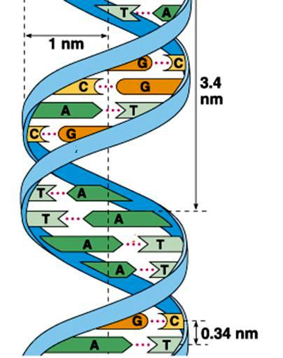

Global Market Comments
December 30, 2019
Fiat Lux
Featured Trade:
(WILL SYNBIO SAVE OR DESTROY THE WORLD?),
(XLV), (XPH), (XBI), (IMB), (GOOG), (AAPL), (CSCO), (BIIB)

Global Market Comments
December 27, 2019
Fiat Lux
SPECIAL ISSUE ABOUT THE FAR FUTURE
Featured Trade:
(PEAKING INTO THE FUTURE WITH RAY KURZWEIL),
(GOOG), (INTC), (AAPL), (TXN),

Legal Disclaimer
There is a very high degree of risk involved in trading. Past results are not indicative of future returns. MadHedgeFundTrader.com and all individuals affiliated with this site assume no responsibilities for your trading and investment results. The indicators, strategies, columns, articles and all other features are for educational purposes only and should not be construed as investment advice. Information for futures trading observations are obtained from sources believed to be reliable, but we do not warrant its completeness or accuracy, or warrant any results from the use of the information. Your use of the trading observations is entirely at your own risk and it is your sole responsibility to evaluate the accuracy, completeness and usefulness of the information. You must assess the risk of any trade with your broker and make your own independent decisions regarding any securities mentioned herein. Affiliates of MadHedgeFundTrader.com may have a position or effect transactions in the securities described herein (or options thereon) and/or otherwise employ trading strategies that may be consistent or inconsistent with the provided strategies.
This site uses cookies. By continuing to browse the site, you are agreeing to our use of cookies.
OKLearn moreWe may request cookies to be set on your device. We use cookies to let us know when you visit our websites, how you interact with us, to enrich your user experience, and to customize your relationship with our website.
Click on the different category headings to find out more. You can also change some of your preferences. Note that blocking some types of cookies may impact your experience on our websites and the services we are able to offer.
These cookies are strictly necessary to provide you with services available through our website and to use some of its features.
Because these cookies are strictly necessary to deliver the website, refuseing them will have impact how our site functions. You always can block or delete cookies by changing your browser settings and force blocking all cookies on this website. But this will always prompt you to accept/refuse cookies when revisiting our site.
We fully respect if you want to refuse cookies but to avoid asking you again and again kindly allow us to store a cookie for that. You are free to opt out any time or opt in for other cookies to get a better experience. If you refuse cookies we will remove all set cookies in our domain.
We provide you with a list of stored cookies on your computer in our domain so you can check what we stored. Due to security reasons we are not able to show or modify cookies from other domains. You can check these in your browser security settings.
These cookies collect information that is used either in aggregate form to help us understand how our website is being used or how effective our marketing campaigns are, or to help us customize our website and application for you in order to enhance your experience.
If you do not want that we track your visist to our site you can disable tracking in your browser here:
We also use different external services like Google Webfonts, Google Maps, and external Video providers. Since these providers may collect personal data like your IP address we allow you to block them here. Please be aware that this might heavily reduce the functionality and appearance of our site. Changes will take effect once you reload the page.
Google Webfont Settings:
Google Map Settings:
Vimeo and Youtube video embeds:
